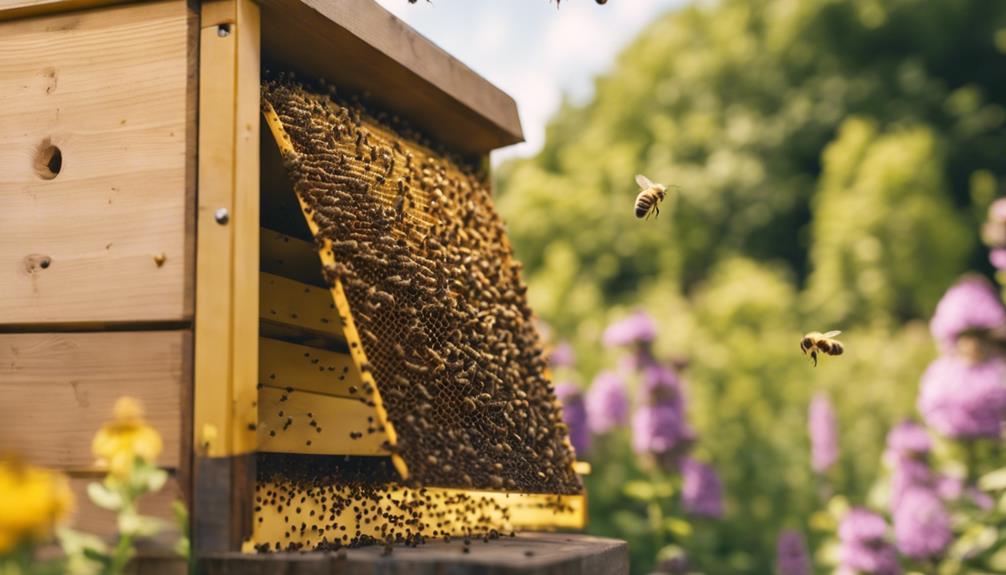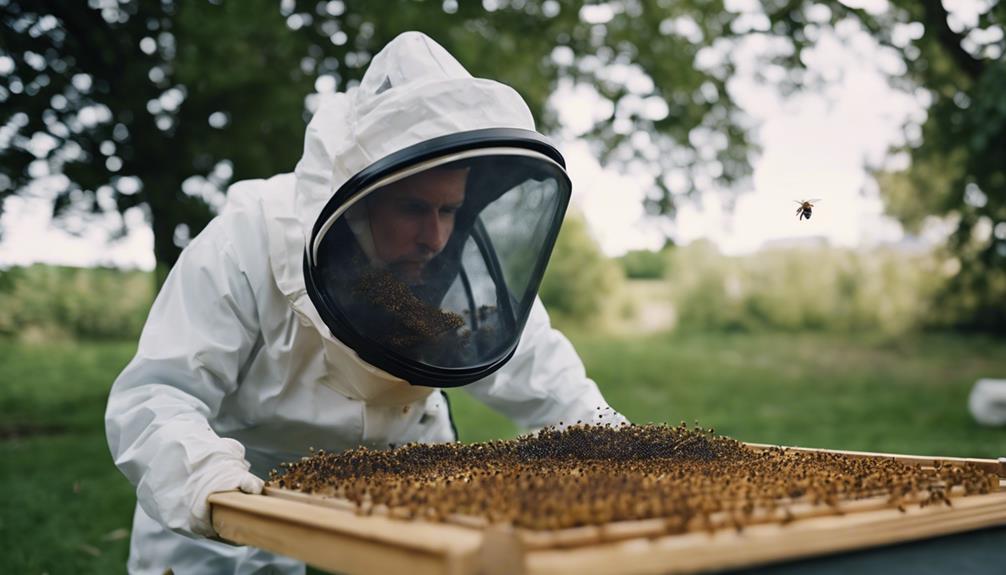In terms of the best type of bees to purchase, Italian honey bees are an excellent choice for their large populations and high honey production, making them a favorite among beginner beekeepers due to their gentle nature and efficiency in hive management. Russian honey bees stand out for their dark coloring and cold weather resilience, excelling in combating mite issues. Carniolan honey bees, with their calm demeanor and ability to thrive in cold climates, provide peaceful beekeeping experiences, especially for newcomers. Buckfast honey bees, although demanding in handling, offer friendly dispositions and impressive honey yields. For those seeking efficient pollinators, Caucasian honey bees exhibit gentle temperament and exceptional pollination capabilities, contributing to plant diversity in a harmonious beekeeping setting.
Cordovan honey bees, a subset of Italian bees, with their unique yellow coloring are gentler and thrive in warm conditions. German honey bees, adapted for colder climates, are perfect for regions with harsh winters. Hybrid honey bees, a blend of various traits, like Midnite and Starline, offer a mix of desirable characteristics to boost colony success subtly hinting at the diverse options available in the world of apiculture.
Main Points
- Russian Honey Bees excel in mite resistance, cold weather adaptability, and low sting likelihood.
- Italian Honey Bees are beginner-friendly, high honey producers, and have a gentle nature.
- Carniolan Honey Bees are docile, thrive in cold climates, and are economical in food consumption.
- Buckfast Honey Bees offer impressive honey yields, tracheal mite resistance, and moderate spring population.
- Hybrid Honey Bees provide a unique blend of desirable traits, hybrid vigor, and boost colony success.
Italian Honey Bees
Italian Honey Bees, renowned for their large populations and high honey production, are favored by beginner beekeepers due to their gentle nature and early brood rearing habits. These golden workers with distinctive black stripes not only look striking but also bring a sense of calm to the hive. Imagine starting your beekeeping journey with these docile bees that diligently care for their brood from spring through fall.
Italian honey bees are like the perfect houseguests, always polite and considerate. Their resistance to European foulbrood is like having a built-in shield, protecting your precious colony. With Italian honey bees, you can watch your hive flourish and thrive, all while enjoying their peaceful buzzing and the sweet rewards of their honey-making prowess.
Russian Honey Bees
Russian honey bees, characterized by their dark coloring and hardiness in cold weather, are a standout choice for beekeepers aiming to combat mite issues.
While slightly more assertive, these bees are less likely to sting, making them a practical option for those seeking resilience and efficiency in their hives.
The importation of Russian honey bees to the U.S. in the 1990s marked a significant shift in beekeeping practices, emphasizing the value of their unique traits in enhancing apiary operations.
Russian Bee Characteristics
Known for their exceptional effectiveness against varroa mites, Russian honey bees possess key traits sought by beekeepers. These bees exhibit strong disease resistance, making them less susceptible to common hive illnesses. Their adaptability to colder climates allows beekeepers in various regions to benefit from their hardiness. Russian honey bees were specifically brought to the U.S. to combat mite infestations, proving their worth in hive management.
With their unique characteristics, these bees offer a valuable advantage to those looking for mite-resistant strains. Beekeeping with Russian honey bees not only aids in maintaining healthy hives but also provides a sense of assurance in managing potential mite challenges.
Benefits of Russian Bees
Imported to the U.S. in the 1990s for their invaluable mite resistance traits, Russian honey bees provide significant benefits to beekeepers facing varroa mite challenges. These Russian bees have a remarkable ability to fend off varroa mites, which are a major threat to honey bee colonies worldwide. Their valuable traits make them a sought-after choice for beekeepers dealing with mite infestations, as they offer a natural defense that can help maintain colony health.
However, due to their limited availability in some regions, acquiring Russian bees can be a challenge. Beekeepers who’ve had the opportunity to work with Russian bees often praise their resilience and effectiveness in managing varroa mite issues, highlighting the importance of these unique honey bees in sustainable beekeeping practices.
Carniolan Honey Bees
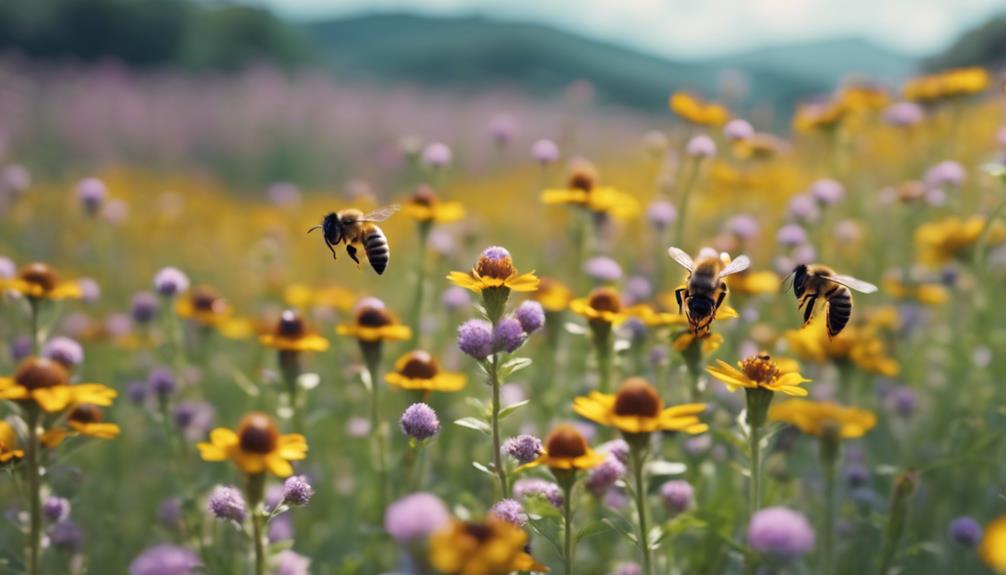
Considered one of the calmest bee races, Carniolan honey bees are an excellent choice for beginner beekeepers seeking a gentle and easy-to-manage colony. These bees, a subspecies of the Western Honey bee, thrive in cold climates, making them perfect for those in chillier regions.
Here’s why they’re a fantastic pick:
- Known for their docile nature, Carniolan bees are less likely to showcase aggressive behavior, offering a peaceful beekeeping experience.
- Their tendency to forage on cool, wet days means you won’t miss out on honey even when the weather isn’t perfect.
- Economical in food consumption and adept at overwintering, Carniolan honey bees are low-maintenance options that suit beekeepers looking for efficiency and ease.
Buckfast Honey Bees
Buckfast Honey Bees, a hybrid bee crafted by Brother Adam, stand out for their friendly demeanor and impressive honey yields.
These bees possess a unique resistance to tracheal mites, a boon for beekeepers seeking hardy colonies.
Though their hybrid nature demands a seasoned touch in beekeeping, the Buckfast Bees’ resilience and productivity make them a top choice for apiarists looking to thrive in their beekeeping endeavors.
Buckfast Bee Characteristics
Developed by Brother Adam, the Buckfast bees are a popular hybrid choice among beekeepers for their resilience to tracheal mites. These bees aren’t only good honey producers but also exhibit moderate population build-up in Spring.
Here are some key characteristics of Buckfast bees:
- Known for their resistance to tracheal mites.
- Valued for their good honey production.
- Can handle dearths well.
Buckfast bees are a mix of several races, making them a hardy and adaptable choice for beekeepers. While they offer great benefits, it’s important to note that managing Buckfast bees may require a bit more experience due to their unique traits.
Benefits of Buckfast Bees
After exploring the unique characteristics of Buckfast bees, it becomes evident that their benefits extend beyond pest resistance and honey production. These hybrid bees, developed by Brother Adam, are renowned for their resilience against mite infestations, making them a top choice for beekeepers combating pests.
However, it’s essential to note that Buckfast bees also exhibit aggressive behavior, requiring experienced beekeepers to handle them with care and expertise. Their distinct traits set them apart from other honey bee races, offering a balanced mix of qualities ideal for beekeeping.
While they may not be the best fit for beginners due to their demanding nature, intermediate beekeepers seeking adaptable and robust bee stock will find Buckfast bees to be a valuable addition to their apiary.
Beekeeping With Buckfast
When beekeeping with Buckfast honey bees, it’s vital to understand their calm demeanor and unique traits for successful management of the hive. These hybrid bees, developed by Brother Adam, offer a mix of desirable traits that can enrich your beekeeping experience.
Here are some key points to ponder:
- Buckfast bees are known for their mite resistance, making them a preferred choice in regions with mite challenges.
- Their hybrid nature provides a balance of characteristics from various bee races, contributing to their overall hardiness.
- Due to their potential aggressiveness towards humans and other colonies, experience in beekeeping is essential for effectively handling Buckfast bees.
Choosing Buckfast bees can be rewarding, but being prepared for their specific needs is paramount to thriving in beekeeping with this unique hybrid.
Caucasian Honey Bees
Caucasian Honey Bees, with their gentle temperament and distinctive coloration, are highly favored by beekeepers for their ease of handling and efficient pollination capabilities. These bees, sporting grey to brown hues with grayish bands, not only look unique but also excel in propolis production, essential for hive health. Their calm demeanor makes them a joy to work with, especially for those seeking a harmonious beekeeping experience.
Additionally, their longer tongues enable them to reach deep flowers, making them exceptional pollinators that significantly contribute to plant diversity. If you desire bees that are both peaceful and proficient in their pollination duties, Caucasian honey bees are an excellent choice for your apiary.
Africanized Honey Bees
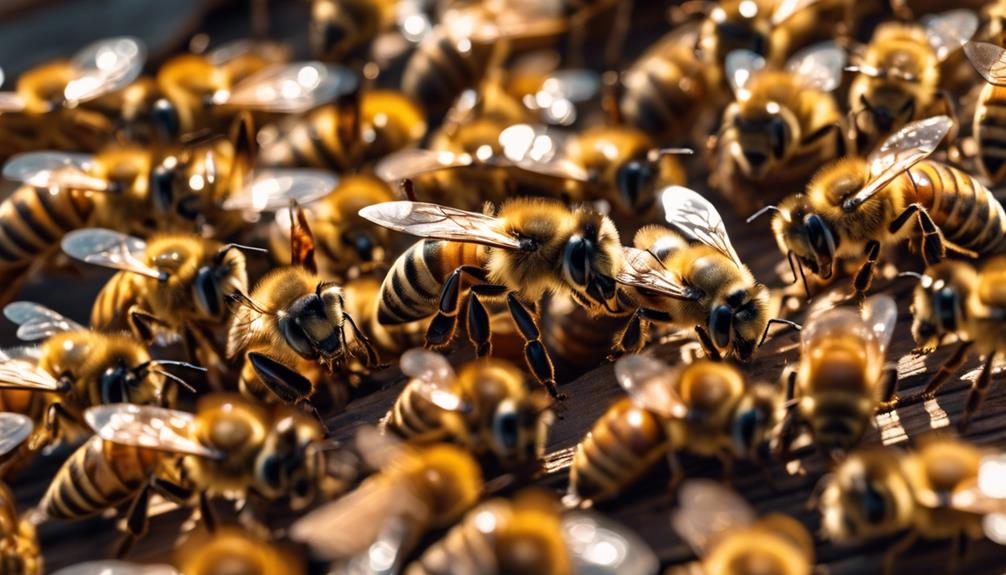
Characterized by their hybrid origin and notorious aggressive behavior, Africanized honey bees pose unique challenges to beekeepers and the public alike. These bees were accidentally released in Brazil in the 1950s during an experiment to increase honey production.
Due to their aggressive nature, Africanized honey bees have spread to various regions in the Americas, making them a significant presence in the beekeeping community. Despite their challenges, understanding and proper management practices can help mitigate the risks associated with Africanized bees.
Cordovan Honey Bees
Cordovan honey bees, a subset of Italian bees, are known for their striking yellow coloring. These bees are a sight to behold, standing out with their vibrant appearance against the backdrop of a busy hive. While Cordovan honey bees are generally gentler than Italian bees, they do have a tendency towards plundering behavior. Thriving in warm weather conditions, they bring a burst of sunshine to any apiary.
Their unique hue and fascinating habits make them a valuable addition to beekeeping environments. However, it’s essential to be mindful of their plundering tendencies, especially when managing multiple bee races. Cordovan honey bees offer both aesthetic appeal and potential benefits, making them a colorful choice for bee enthusiasts looking to vary their hives.
German Honey Bees
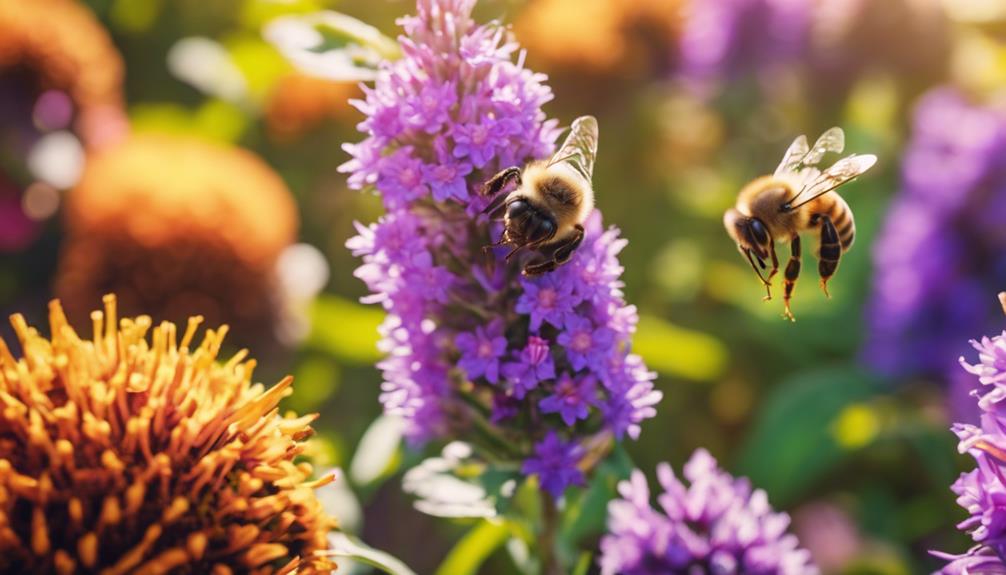
With their dark coloration and adaptation to colder climates, German honey bees, a subspecies of Apis mellifera mellifera, are highly valued for their hardiness and resilience. These bees excel in propolis production, creating a protective barrier within their hives.
Their overwintering capabilities are impressive, allowing them to survive harsh winter conditions with ease. German honey bees are perfect for beekeepers in regions with cold climates, as they can forage in cooler temperatures and maintain strong colonies throughout the winter.
Their docile nature and disease resistance make them a top choice for those seeking productive and low-maintenance bees. When considering German honey bees, one can trust in their ability to thrive and contribute positively to the hive’s well-being.
Hybrid Honey Bees
Hybrid honey bees, a result of crossing different races or subspecies, offer beekeepers a unique blend of desirable traits for improving colony health and productivity. These bees exhibit hybrid vigor, resulting in improved productivity, disease resistance, and overall well-being.
Commercially available hybrids like Midnite and Starline are carefully bred to possess specific characteristics that beekeepers find extremely beneficial. For instance, Buckfast bees are renowned for their gentle demeanor, high honey production, and resistance to tracheal mites.
Beekeepers often opt for hybrid bees due to their exceptional mix of traits that can boost the success of their colonies. Choosing hybrid honey bees can be a productive and rewarding decision for beekeepers aiming to cultivate thriving and resilient hives.

Hello! My name is Noel Calvin. I graduated from UCLA and now work as a writer at Launch Ninjas. I write blog posts that inspire and guide our readers in their entrepreneurial pursuits. I live in Pleasantville, NJ, with a peaceful yet lively atmosphere that inspires me.
Writing stories is more than just a job for me. It allows me to share my observations and satisfy my curiosity about the world. I combine my analytical skills with creative enthusiasm to delve into technology trends and startup stories. But my life isn’t limited to screens and keyboards. I value loyalty, passion, and a touch of old-fashioned charm, which I infuse into every narrative I create.
I love spending time in my garage, jamming with my band when I’m not writing. Playing the guitar and singing bring me immense joy. I also enjoy capturing ordinary and extraordinary moments through my camera lens and exploring new culinary adventures that excite my taste buds. I’m always seeking new experiences.
My family is very important to me. Joyful Sunday brunches filled with laughter and intense board game nights keep me grounded, reminding me of life’s simple pleasures.
In my world, every moment is an opportunity for discovery. Every discovery is a story worth sharing, whether a heartfelt moment at home or the pulse of technological innovations. Join me as I navigate through life, one blog post, one guitar strum, and one heartwarming family dinner at a time.

